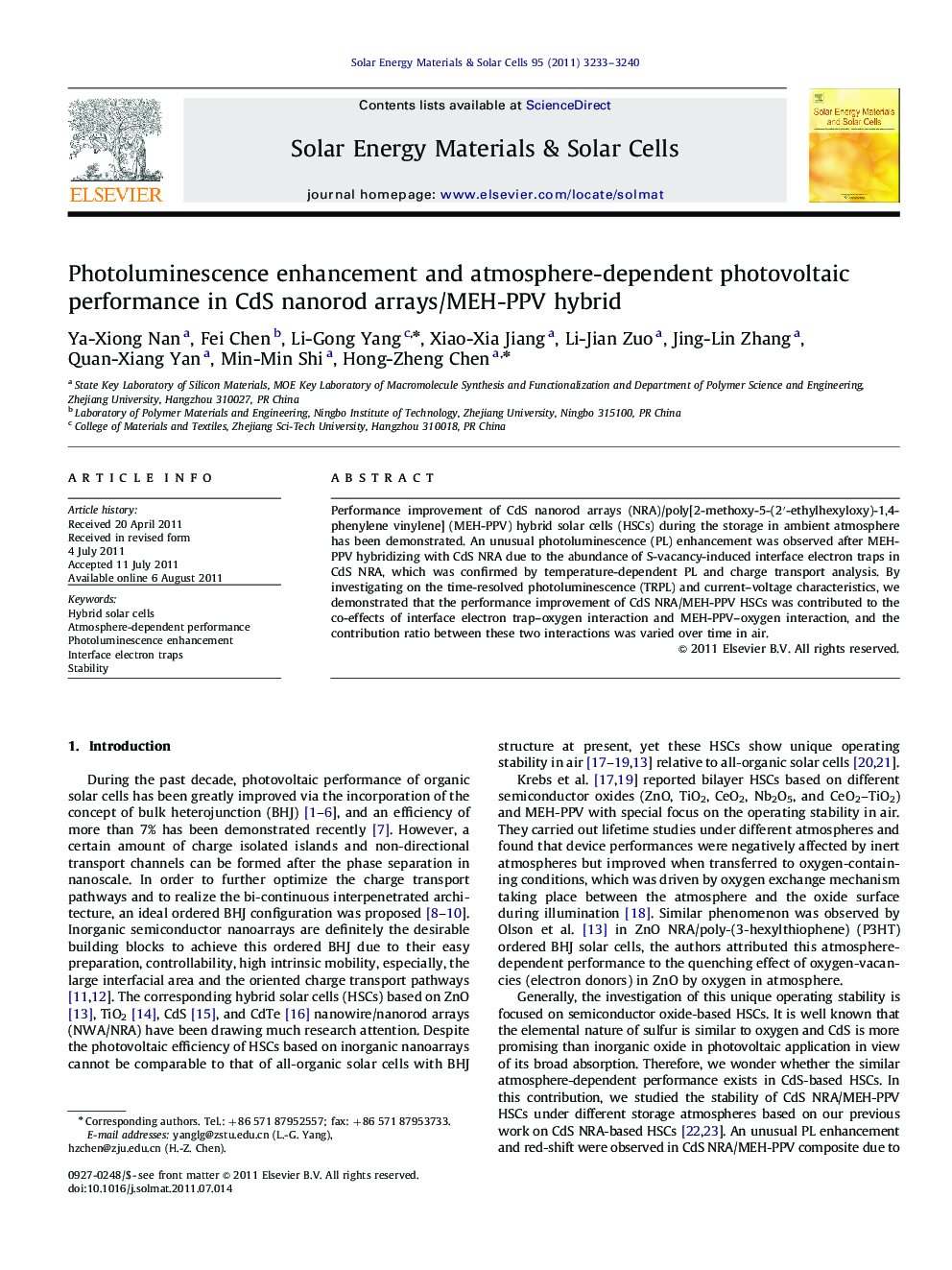| Article ID | Journal | Published Year | Pages | File Type |
|---|---|---|---|---|
| 79621 | Solar Energy Materials and Solar Cells | 2011 | 8 Pages |
Performance improvement of CdS nanorod arrays (NRA)/poly[2-methoxy-5-(2′-ethylhexyloxy)-1,4-phenylene vinylene] (MEH-PPV) hybrid solar cells (HSCs) during the storage in ambient atmosphere has been demonstrated. An unusual photoluminescence (PL) enhancement was observed after MEH-PPV hybridizing with CdS NRA due to the abundance of S-vacancy-induced interface electron traps in CdS NRA, which was confirmed by temperature-dependent PL and charge transport analysis. By investigating on the time-resolved photoluminescence (TRPL) and current–voltage characteristics, we demonstrated that the performance improvement of CdS NRA/MEH-PPV HSCs was contributed to the co-effects of interface electron trap–oxygen interaction and MEH-PPV–oxygen interaction, and the contribution ratio between these two interactions was varied over time in air.
Graphical AbstractFigure optionsDownload full-size imageDownload as PowerPoint slideHighlights► Operating stability of CdS nanorod array/MEH-PPV hybrid solar cells was presented. ► Device performance was greatly improved after exposure to ambient atmosphere. ► PL and transport analysis demonstrated the abundance of interface electron traps. ► Interface electron trap–oxygen and MEH-PPV–oxygen interaction mechanism was proposed. ► Meanwhile, interface electron trap-dependent PL enhancement was observed.
